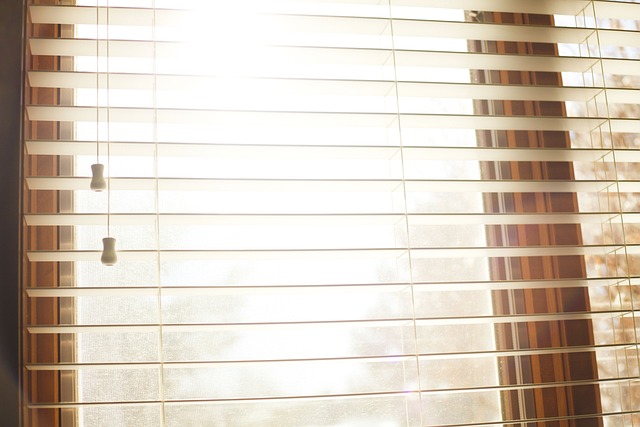
The household item that’s making your hay fever worse
Spring has arrived, and while we’re loving seeing some sunshine after a long winter, the inevitable resurgence of hay fever symptoms is also upon us.
The experts at Shutterly Fabulous have done some research into the hidden allergens in our home and curtains have come up trumps.
As many as 12 million people are allergic to their own home in the UK, with 15-20% of us having indoor allergies.
Dust mites, pet dander, pollen and mould spores can all accumulate in curtains which contributes to allergic reactions. It can also create poor air quality in your home.
Cleaning curtains regularly can significantly reduce these allergens and therefore, hay fever symptoms.

How often should we be participating in curtain cleaning?
A whopping 68% of Brits admit to infrequently washing their curtains or dusting blinds every few months.
This is despite the expert advice to wash curtains every three months and dust blinds on a weekly basis.
While our surfaces and floors are often the focus of spring cleaning, curtains can be overlooked.
This then leads to the pieces of fabric trapping a vast number of allergens over the time they are neglected.
What are the allergens that are hiding in our curtains?
The allergens that are hiding within our curtains and windows contribute to poor indoor air quality, and therefore allergic reactions.
Some of the common allergens that can be hiding include:
Dust mites
These tiny creatures thrive in our fabric and upholstery, and this includes curtains.
Dust mites can cause sneezing, coughing and itchy eyes – all of which is associated with hay fever!
Pollen
During the warmer months, pollen can enter our homes through open windows and then settle on curtains.
This triggers allergic reactions that are linked to hay fever including sneezing, runny nose and itchy eyes.
Mould
Mould can grow on damp curtains, especially in a humid environment Mould spores can cause respiratory issues which include asthma attacks and skin rashes.
Pet dander
Pet hair and dander can also accumulate on our curtains, and this can contribute to allergy symptoms.
Grooming pets regularly and cleaning curtains regularly can help to reduce this allergen.
Sam Tamlyn, the Window Specialist and Managing Director of Shutterly Fabulous explains: “Curtains can act as a magnet for allergens.
“Dust mites, pet dander and pollen can all settle into the fabric, and when disturbed, these particles become airborne which worsens the allergy symptoms.
“Additionally, condensation during the colder months can create a damp environment that promotes the growth of mould and mildew on the curtains.”

How can I keep by curtains and blinds clean?
As already stated, keeping your curtains and blinds clean will help to avoid the damage.
But how is best to clean them effectively?
Hoovering
Use a hoover with an upholstery attachment and a HEPA filter to vacuum both sides of the curtains and blinds from top to bottom.
This will make sure all of the dust is cleaned away.
This should, ideally, be done once or twice a month, depending on the season – to ensure there is no dust or allergen accumulation.
Washing
Be sure to machine wash your curtains every three to six months using a gentle cycle and a mild detergent at 60 degrees.
This will kill any spores and dust mites.
To dry them, hang them on the line outdoors or if the weather doesn’t permit this, you can dry them in the tumble dryer on a low heat setting.
Spot cleaning
Address any stains or spills on your blinds and curtains as soon as they occur by using a mild detergent or cleaning solution and a damp cloth. Gently blot the area to avoid the stain spreading.
For your blinds in particular, take extra care depending on the material.
Steam cleaning
Use a handheld steam or garment cleaner close to the fabric and move slowly from top to bottom.
This will give a deeper clean and is best done every three to six months.
Dusting
Use a feather duster or microfibre cloth to dust your blinds weekly, or as part of a weekly reset cleaning routine.
This will be more effective for your blinds, but curtains can be shaken to remove dust and any visible residue.
READ MORE





